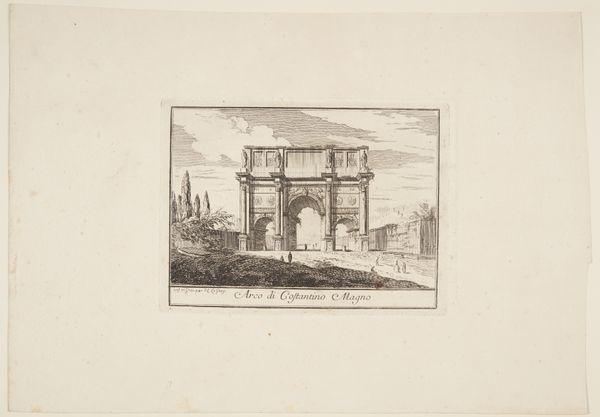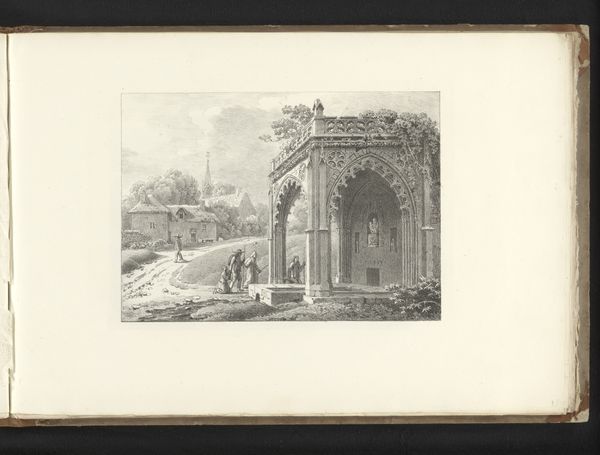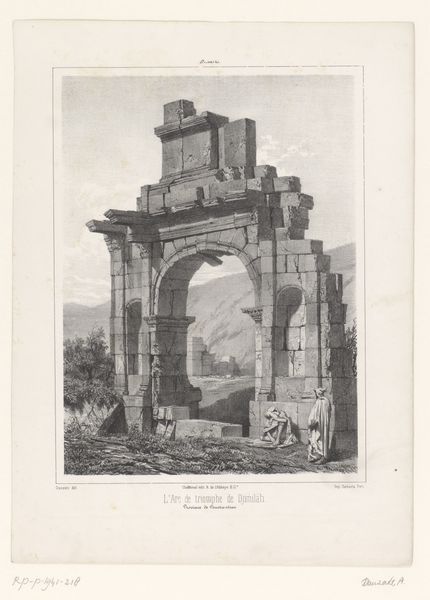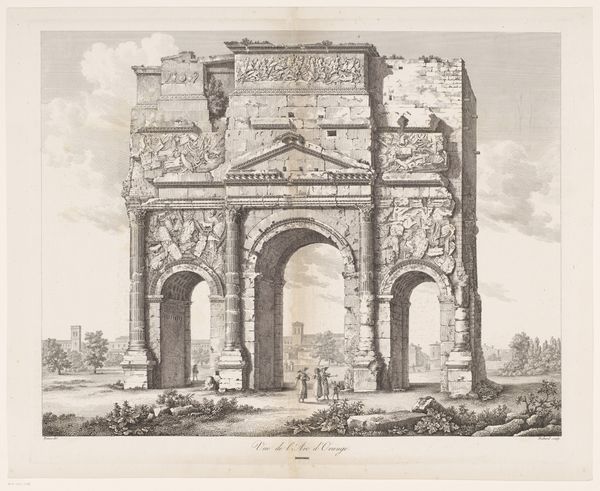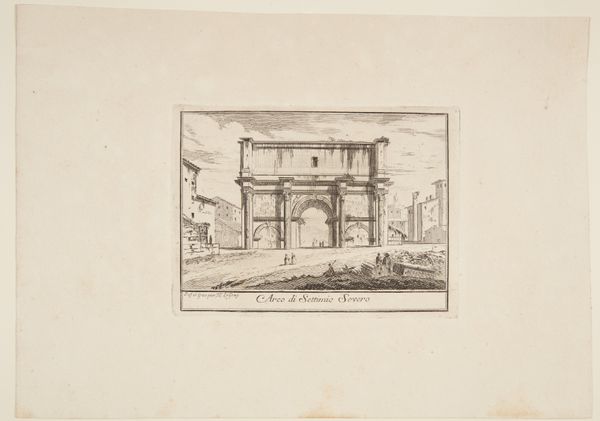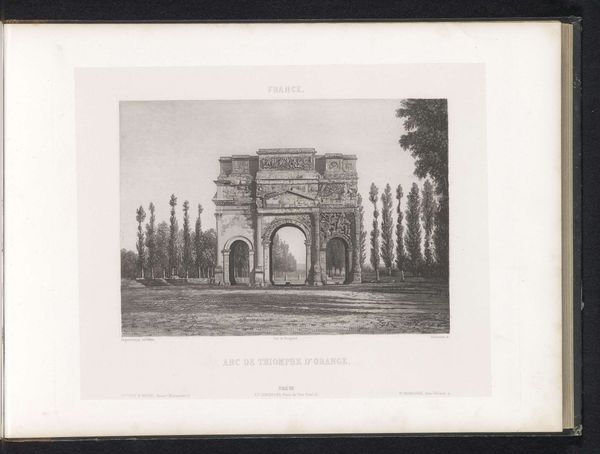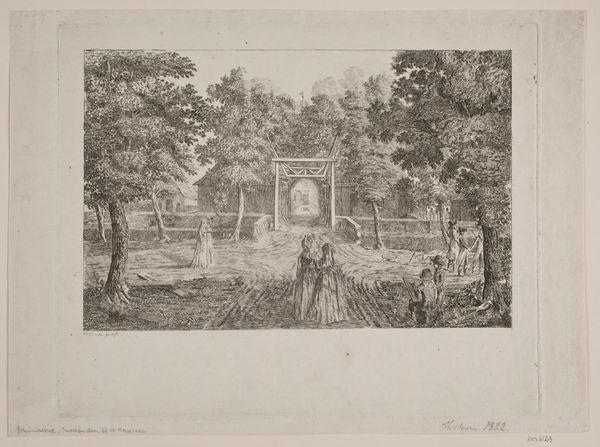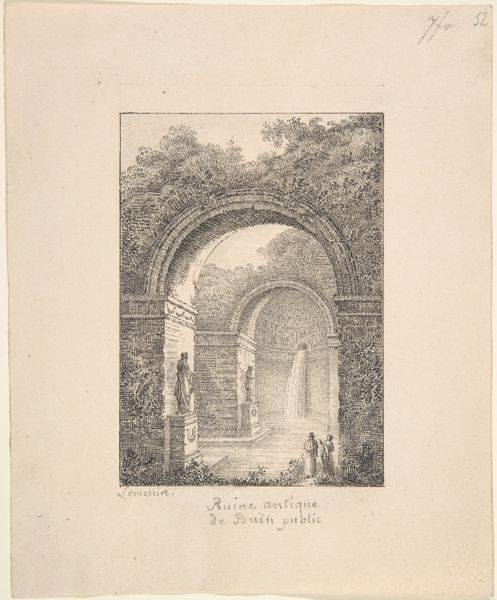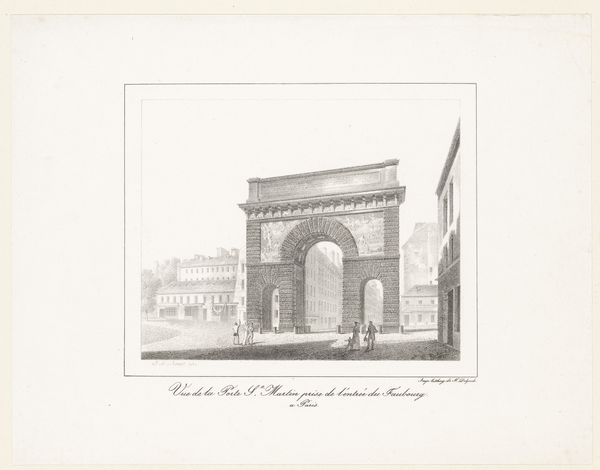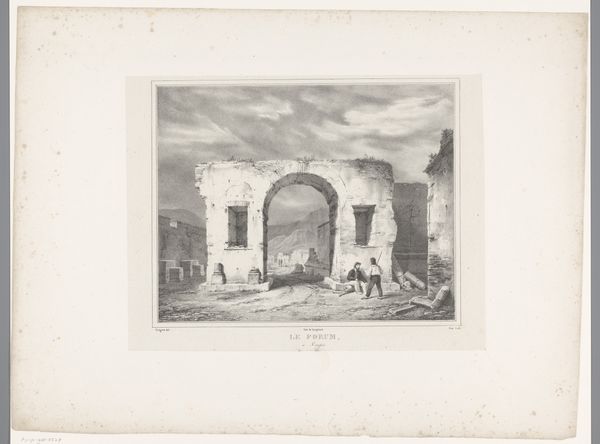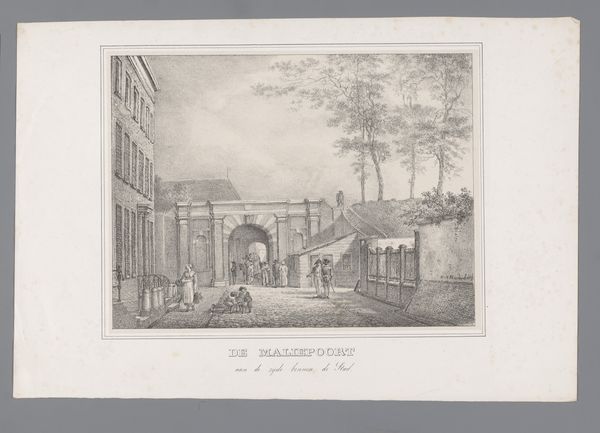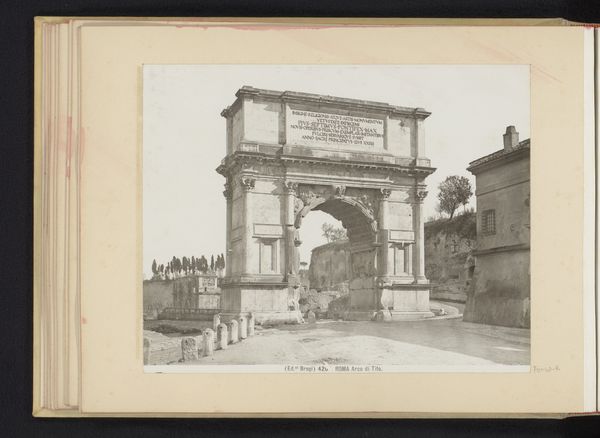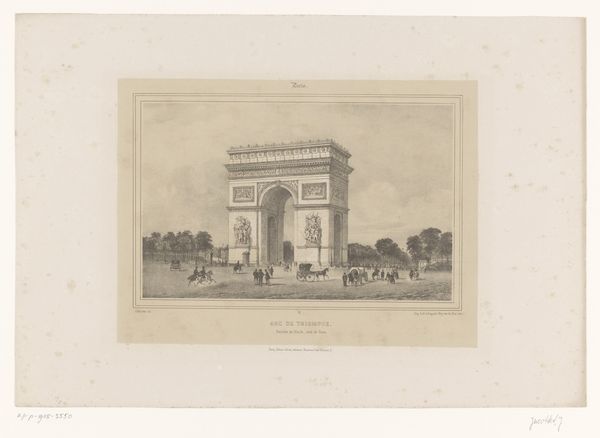
print, engraving, architecture
# print
#
landscape
#
historical photography
#
cityscape
#
engraving
#
architecture
#
realism
Dimensions: height 200 mm, width 219 mm
Copyright: Rijks Museum: Open Domain
Curator: Let's explore this print entitled "View of the Arch of Titus in Rome" by Gustav Bauernfeind, dating back to 1880. It's an engraving that showcases Bauernfeind’s talent for realism, doesn't it? Editor: Absolutely. My first impression is the density of the image—the weight of the stone, the intricate details etched into the surface, it all speaks to the endurance of empire and a bygone era of military might. Curator: Precisely! The Arch itself stands as a testament to Roman imperial power, commemorating Titus's victory in the Jewish War. Bauernfeind was known for his meticulous documentation of architecture and life in the Middle East and Southern Europe, making this piece typical of his broader oeuvre. Editor: Seeing the historical context really shifts my perspective. Considering the arch was constructed to celebrate the suppression of a rebellion and destruction of the Second Temple… suddenly the aesthetic appreciation gives way to a more critical evaluation of what it represents in terms of historical violence and oppression. Curator: Indeed. Art doesn’t exist in a vacuum. And this particular work is fascinating when examined through the lens of Orientalism and 19th-century European fascination with classical civilizations. The architectural rendering carries with it those colonialist attitudes. Editor: How fascinating that an engraving made during a period of rampant European imperialism reflects the ongoing power structures legitimized by this very monument to imperial triumph. This image, seemingly neutral at first glance, embodies the complex interplay between art, history, and power. Curator: By acknowledging these layers of meaning, we see the work in its fullness, not just as a depiction of an arch but as a historical artifact steeped in social and political significance. Editor: This discussion reveals a fresh awareness that this artwork opens us to discussions of power, of historical violence and commemoration, not to mention European visual cultures and social-political conditions of the time. It definitely encourages engagement.
Comments
No comments
Be the first to comment and join the conversation on the ultimate creative platform.
